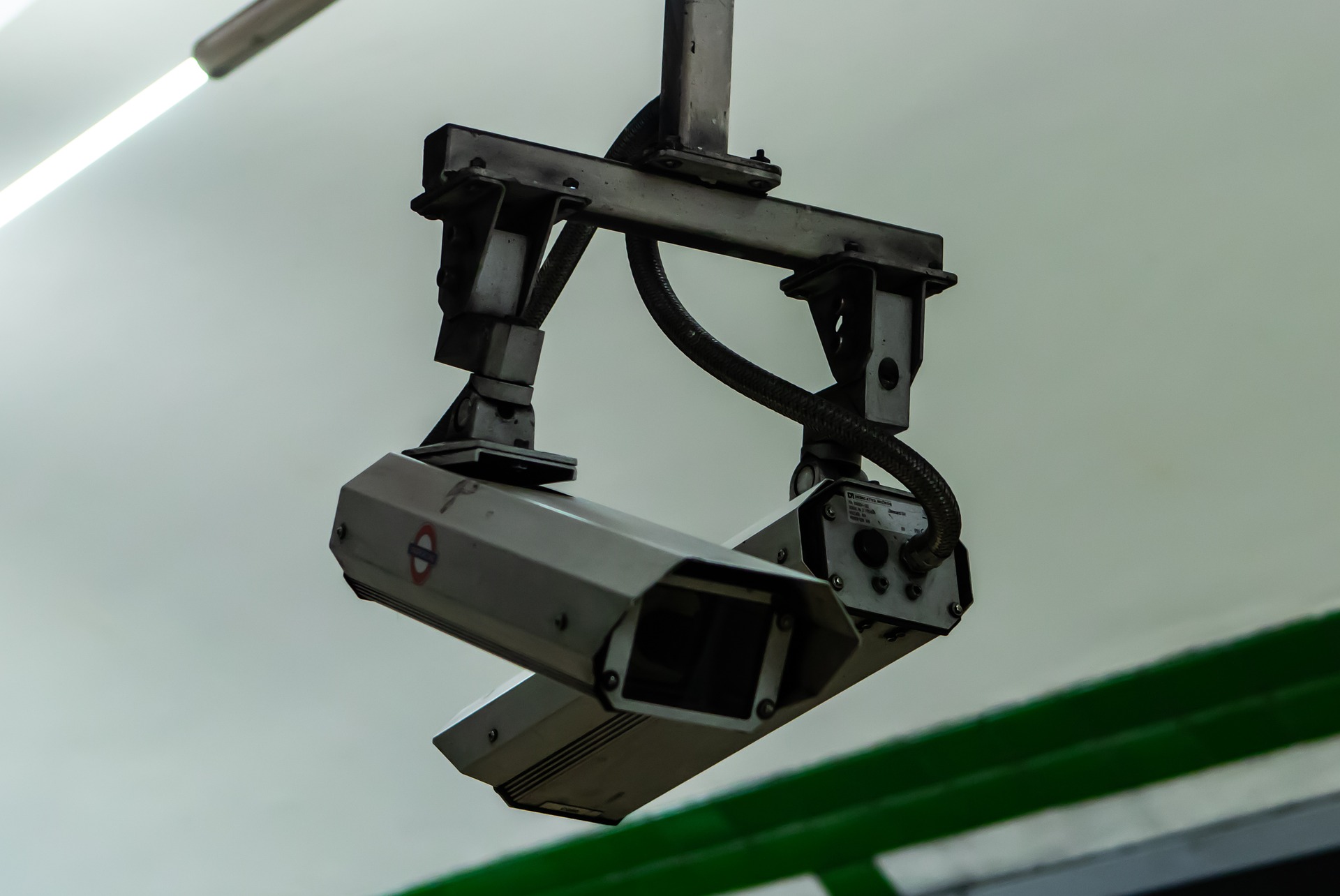CCTV, or closed-circuit television, has become ubiquitous in modern society. It is found everywhere, from public spaces to businesses, industrial plants, and even private homes. But have you ever wondered why it is called a closed circuit? This article will explore the origins of the term as well as the technology behind CCTV and how it has evolved over the years.
The Basic Components of CCTV Systems
Before delving into the concept of a closed circuit in CCTV, it’s important to understand the basic components of CCTV systems. A CCTV system typically consists of video cameras, a digital video recorder (DVR) or network video recorder (NVR), and a central control center. The cameras capture footage, which is then recorded and stored on the DVR or NVR. The central control center allows authorised users to monitor the footage in real time.
The Concept of a Closed Circuit and Its Role in CCTV
A closed circuit refers to a complete loop of a circuit, where the current flows continuously through the circuit. In the context of CCTV, a “closed circuit” means that the video signals from the cameras are transmitted through a circuit that is completely contained within the system. This means that the signals cannot be intercepted by outside sources, providing a more secure form of surveillance.
Historical Context: The Development of Closed Circuit Technology
The concept of a closed circuit has been around since the 19th century when it was first used in telegraphy. The technology was later adapted for use in broadcasting, where it allowed television signals to be transmitted over long distances. Closed circuit technology was then applied to security systems, allowing for the creation of CCTV systems in the mid-20th century.
The Benefits and Limitations of Closed Circuit Technology in CCTV Systems
One of the main benefits of closed circuit technology in CCTV systems is its ability to provide a more secure form of surveillance. As previously mentioned, video signals are transmitted through a circuit that is completely contained within the system, meaning that they cannot be intercepted by outside sources. However, closed circuit technology does have its limitations, as it requires a physical connection between the cameras and the DVR or NVR. This can limit the distance over which the cameras can be placed, as well as the number of cameras that can be used in a single system.
Closed Circuit vs. Open Circuit: What’s the Difference?
In contrast to closed circuit technology, open circuit technology allows for the transmission of video signals over a public network, such as the Internet. This makes it possible to access the footage from anywhere with an internet connection, providing a more flexible form of surveillance. However, open circuit technology is also more vulnerable to hacking and interference from outside sources.

The Use of Closed Circuit Technology in Other Applications
Closed circuit technology is not just used in CCTV systems. It is also used in other applications, such as extensive traffic-monitoring systems on motorway networks. In these systems, the cameras are placed at various locations along the motorway and are connected to a central control center, which allows authorised users to monitor the traffic in real time.
Modern CCTV Systems: How They Work and Why Closed Circuit Technology is Still Relevant
Modern CCTV systems have come a long way since their inception in the mid-20th century. Today’s systems use a variety of technologies, including both analog and IP CCTV. Analog systems use coaxial cables to transmit the video signals, while IP CCTV uses the internet to transmit the signals. Despite the advances in technology, closed circuit technology is still relevant today as it provides a more secure form of surveillance.
Common Misconceptions about Closed Circuit Technology in CCTV Systems
Despite its widespread use, there are many misconceptions surrounding closed circuit technology in CCTV systems. One of the most common is the belief that CCTV systems are primarily used to spy on people. In reality, CCTV systems are installed for a variety of reasons, including deterring criminal activity and monitoring employee behaviour.
Another common misconception is that CCTV systems are expensive and difficult to install. While there are certainly high-end systems that can be costly, there are also affordable options available that are easy to install and use. Additionally, many businesses and organisations find that the investment in a CCTV system pays off in increased security and peace of mind.
Best Practices for Designing and Implementing Closed Circuit CCTV Systems
When designing and implementing a closed circuit CCTV system, there are several best practices to keep in mind. The first step is to identify the specific goals of the system, whether they are deterring criminal activity, monitoring employee behaviour, or protecting valuable assets. It’s recommended to get a professional engineer involved in the initial design phase to ensure that the system is optimised to meet the organisation’s goals and requirements.
Once the goals have been established, it is important to choose the right components for the system. This includes selecting the appropriate cameras, recorders, and storage devices, as well as ensuring that the system is installed and configured properly. A professional engineer can assist in selecting the appropriate components and ensure that the system is installed and configured properly to provide the necessary level of security and surveillance.
Regular maintenance and troubleshooting are also critical to ensuring that the system is functioning properly and providing accurate and reliable footage. This includes checking for any damage or malfunctions, ensuring that the cameras are positioned correctly, and verifying that the storage devices are working properly. It’s recommended to get a professional engineer to handle the maintenance and troubleshooting process, as they can provide a thorough analysis of the system’s performance and identify any potential issues before they become major problems. They can also provide recommendations on how to address any issues and ensure that the system is working optimally.
Choosing the Right Components for Your Closed Circuit System
When selecting components for a closed circuit CCTV system, there are several factors to consider. One of the most important is the type of camera that will be used. This can include analog cameras, IP cameras, or even wireless cameras. It’s recommended to get a professional engineer to assist in selecting the appropriate camera type and configuration that best suits the organisation’s needs and requirements.
Other factors to consider include the image resolution, image size, and whether the camera has night vision capabilities. A professional engineer can guide the appropriate image resolution and size that will provide the necessary level of detail for the organisation’s surveillance needs. They can also recommend the appropriate camera with night vision capabilities for areas that require 24-hour monitoring.
Additionally, it is important to choose a recorder and storage device that is compatible with the cameras and can handle the amount of image data that will be generated. A professional engineer can ensure that the recorder and storage device selected is optimised to work with the specific camera configuration and image resolution, as well as having the necessary storage capacity for the organisation’s surveillance needs.
Installing and Configuring Your Closed Circuit System
Proper installation and configuration are critical to ensuring that a closed circuit CCTV system functions properly. This includes ensuring that the cameras are positioned correctly, the cables are properly connected, and the storage device is configured properly. It’s recommended to get a professional engineer to handle the installation and configuration process, as they have the necessary expertise and tools to ensure that the system is set up correctly and according to industry standards.
Additionally, it is important to ensure that the system is configured to meet the specific needs of the organisation, such as adjusting the recording schedule or setting up remote viewing capabilities. A professional engineer can work with the organisation to identify its specific requirements and customise the system accordingly. This can help to ensure that the system is optimised for its intended use and provides the desired level of security and functionality.
Maintaining and Troubleshooting Your Closed Circuit System
Regular maintenance and troubleshooting are essential to keeping a closed circuit CCTV system functioning properly. This includes checking for any damage or malfunctions, verifying that the cameras are positioned correctly, and ensuring that the storage devices are working properly. It’s recommended to get a professional engineer to handle the maintenance and troubleshooting process, as they can provide a thorough analysis of the system’s performance and identify any potential issues before they become major problems. They can also provide recommendations on how to address any issues and ensure that the system is working optimally.
If the system does experience a problem, it is important to have a plan in place for troubleshooting and repairing the issue. This may involve contacting the manufacturer or a professional CCTV technician. However, having a professional engineer who is familiar with the system and its configuration can help expedite the troubleshooting and repair process, minimising any downtime and ensuring that the system is back up and running as soon as possible.
FAQs
Can closed circuit CCTV systems be hacked?
While any system can be vulnerable to hacking, closed circuit CCTV systems are generally more secure than open systems. By their nature, closed circuit systems are not connected to the internet and can only be accessed by authorised users.
How long can CCTV footage be stored?
This can vary depending on the storage device and the amount of data being generated. However, many modern systems can store footage for several weeks or even months.
Can CCTV footage be used in court?
Yes, CCTV footage can be used as evidence in court. However, it is important to ensure that the footage is properly stored and maintained to ensure its admissibility.
Final Thoughts
Understanding the history and technology behind CCTV systems is crucial to fully grasp why CCTV is called a closed circuit. Closed circuit technology has come a long way since its inception, and it still plays a crucial role in modern security systems. While there may be misconceptions about closed circuit technology, it remains a reliable and effective form of surveillance.
When designing and implementing a closed circuit CCTV system, it’s important to choose the right components and consider best practices for installation and maintenance. Keeping up with technological advancements and staying informed about the latest security solutions can help ensure that your system remains effective and up-to-date. If you have any further questions or concerns about closed circuit technology in CCTV systems, be sure to check out our consultation with a CCTV professional. With the right knowledge and tools, you can create a secure and efficient closed circuit CCTV system that provides peace of mind for your home or business.


